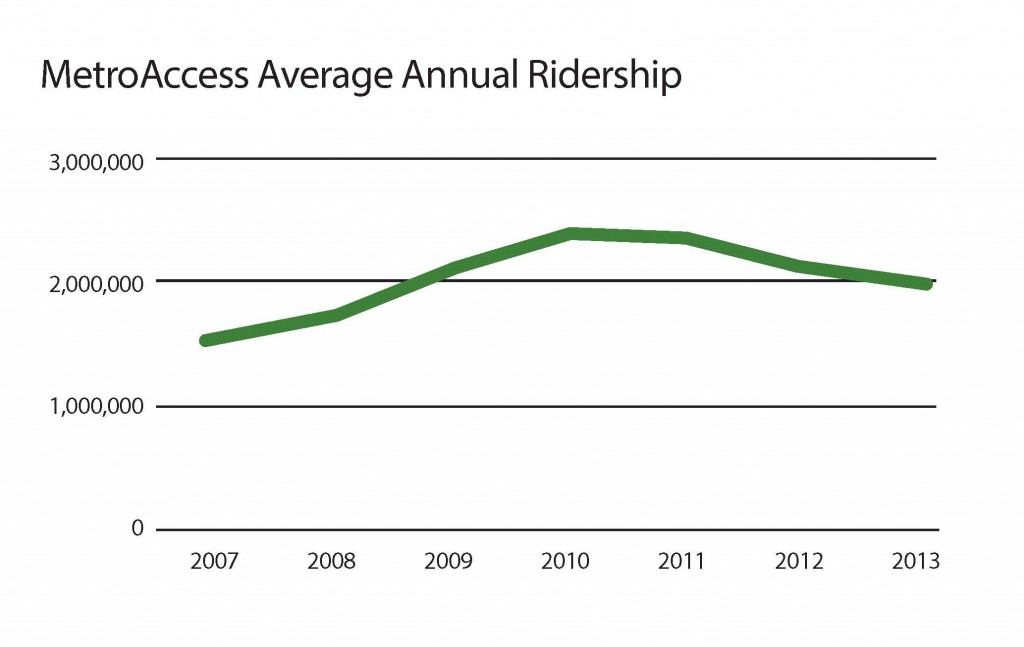MetroAccess – Serving the Region’s Disabled Community
Metro is the nation’s most  accessible large transit system. All 86 Metrorail stations have elevators and the new 7000-series rail cars are designed to maximize accessibility. Metrobus operates 1,100 fully accessible buses, most of which are low-floor and ramp-equipped and all of which have automated stop announcements. Numerous other changes have been made by Metro to maximize usability so that many customers with disabilities are able to use Metrobus and Metrorail for some of their travel. However, inadequacies such as the lack of curb cuts, sidewalks and traffic signals impact disabled customers’ ability to use Metrorail and Metrobus. MetroAccess serves these trips and others and presently provides about two million trips per year.
accessible large transit system. All 86 Metrorail stations have elevators and the new 7000-series rail cars are designed to maximize accessibility. Metrobus operates 1,100 fully accessible buses, most of which are low-floor and ramp-equipped and all of which have automated stop announcements. Numerous other changes have been made by Metro to maximize usability so that many customers with disabilities are able to use Metrobus and Metrorail for some of their travel. However, inadequacies such as the lack of curb cuts, sidewalks and traffic signals impact disabled customers’ ability to use Metrorail and Metrobus. MetroAccess serves these trips and others and presently provides about two million trips per year.
MetroAccess was originally created to provide supplementary specialized transportation services to the Metro system. Beginning some years ago, as social service agencies reduced their transportation offerings, MetroAccess gradually became the region’s general paratransit provider.
For Metro and the region, the growth of the program is unsustainable. The costs to provide paratransit services that meet robust federal regulations are often twice the cost of transportation provided by human service agencies. Additionally, customers are unable to receive the specialized services on board that the human service agencies provide.
To best meet the needs of the region’s customers with disabilities and financial realities, a strategic and region-wide plan must be developed to deliver accessible transit and paratransit throughout Metro’s service area. MetroAccess is working with its jurisdictional partners to address regional roles and responsibilities for paratransit services and a Regional Accessibility Strategic Plan is under development to meet the following objectives:
- Coordinate planning and delivery of all transportation services, throughout the region, for seniors and persons with disabilities;
- Eliminate infrastructure and environmental obstacles to use accessible fixed- route transit;
- Design and plan transit facilities, equipment and services to provide not only compliance with the Americans with Disabilities Act, but also usability by seniors and persons with disabilities;
- Communicate the broad range of transportation options to people with disabilities and to seniors, so that they can make informed choices about services that best meet their needs; and
- Establish roles and responsibilities in coordinating and delivering accessible transportation to people with disabilities and to seniors.
For more information:
Download both the full Momentum plan and the Executive Summary.
Regional support is important to making Momentum a reality! A number of regional stakeholders have already endorsed Momentum. Please sign on and add your name to endorse Momentum and send the message that public transit is vital to the National Capital Region.


Recent Comments